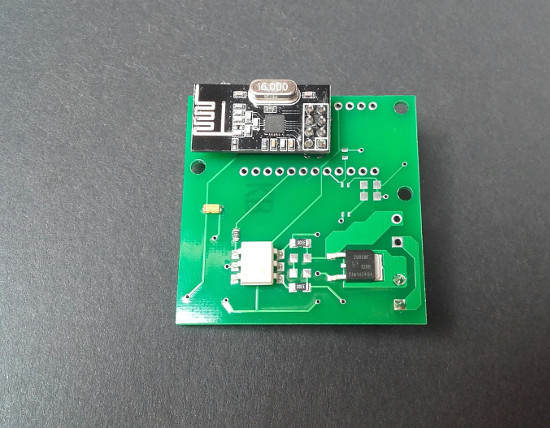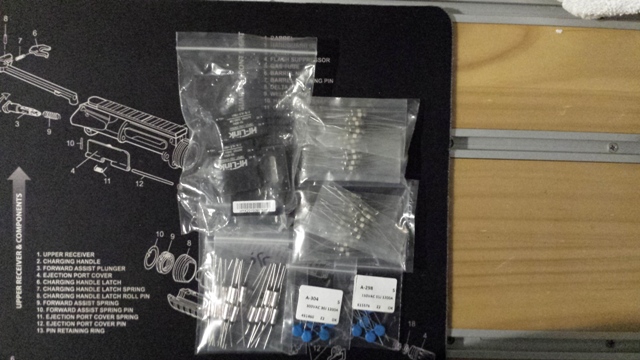Safe In-Wall AC to DC Transformers??
-
@ceech said:
This one is not "safe", but it is an In-Wall AC to DC converter. Transformerless. With a 3A Solid state relay:


The converter output is 3.3V at 100mA and the solid state relay is a Triac.
Do you have some shcematic of this board ? I'd like to adapt it for 2 relays
@Fabien @DrJeff Here is a link to board and schematic files for the transformerless AC-DC converter:
https://github.com/ceech/AC_SR087 -
Would this varistor work with 240v?
http://www.ebay.com/itm/10-x-Zinc-Oxide-Varistor-250VAC-60J-2500A-10mm-/260848704608?hash=item3cbbcb5c60 -
@Fabien @DrJeff Here is a link to board and schematic files for the transformerless AC-DC converter:
https://github.com/ceech/AC_SR087 -
Would this varistor work with 240v?
http://www.ebay.com/itm/10-x-Zinc-Oxide-Varistor-250VAC-60J-2500A-10mm-/260848704608?hash=item3cbbcb5c60 -
@MartinP Based on my limited knowledge, yes, that should work. Maybe someone else can chime in to confirm?
@petewill said:
@MartinP Based on my limited knowledge, yes, that should work. Maybe someone else can chime in to confirm?
I would personally go with a higher voltage rating. Something like 15-20% higher than your normal voltage otherwise you may get regular nuisance trips. So for a 240 VAC system, I would use something close to 290V.
Cheers
Al -
@petewill said:
@MartinP Based on my limited knowledge, yes, that should work. Maybe someone else can chime in to confirm?
I would personally go with a higher voltage rating. Something like 15-20% higher than your normal voltage otherwise you may get regular nuisance trips. So for a 240 VAC system, I would use something close to 290V.
Cheers
Al -
 :stuck_out_tongue:
:stuck_out_tongue: -
Hi all,
I was wondering, I want to be able to adress my blinds using mysensors. Using the relay, radio etc works fine, yet I am still wondering on this power supply. So using the above component I basically prevent fire by using the thermal fuse and an overload by using a regular fuse, the varistor and the HLK.
Now, I am using a Nano (I have still 15 of those) which appear to be using 230mA, the radio itself and a relay. The relay (from the spec sheet) uses 180mA. This should be ok to be used with the HLK shown above. Now, my main concern is, how do you make a all sit together nicely? Is there a PCB type of board you are using? Any pointers welcome :)
Kind regards
Steve
-
Hi Steve
this may be useful http://forum.mysensors.org/topic/1540/110v-230v-ac-to-mysensors-pcb-board
Regrads
Filip -
-
I'm planning on using the HLK-PM01 with the extra precautions discussed here; gluing a thermal fuse on top of the HLK-PM01 and adding a fuse and varistor.
My only problem right now is that I'm unable to find a good source for 0.3A slow blow fuses with axial leads on eBay. The only variants I can find are without leads and it feels a bit unnecessary to add a fuse holder to the circuit since the fuse is meant to be non-replaceable. The ones that petewill posted a link to are out-of-stock. Does anyone have any good suggestion where to find good fuses to use?
-
-
I'm planning on using the HLK-PM01 with the extra precautions discussed here; gluing a thermal fuse on top of the HLK-PM01 and adding a fuse and varistor.
My only problem right now is that I'm unable to find a good source for 0.3A slow blow fuses with axial leads on eBay. The only variants I can find are without leads and it feels a bit unnecessary to add a fuse holder to the circuit since the fuse is meant to be non-replaceable. The ones that petewill posted a link to are out-of-stock. Does anyone have any good suggestion where to find good fuses to use?
-
-
If I want to use a relay for in-wall use. Could I use the same Slow Blow fuse, thermal fuse and varistor to get it to be more safe?
